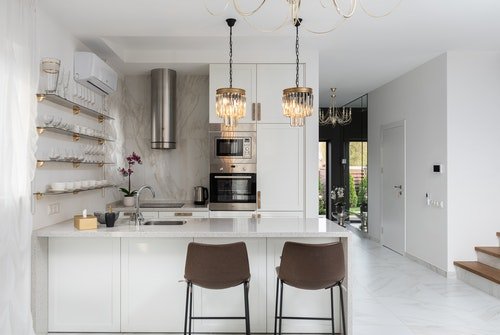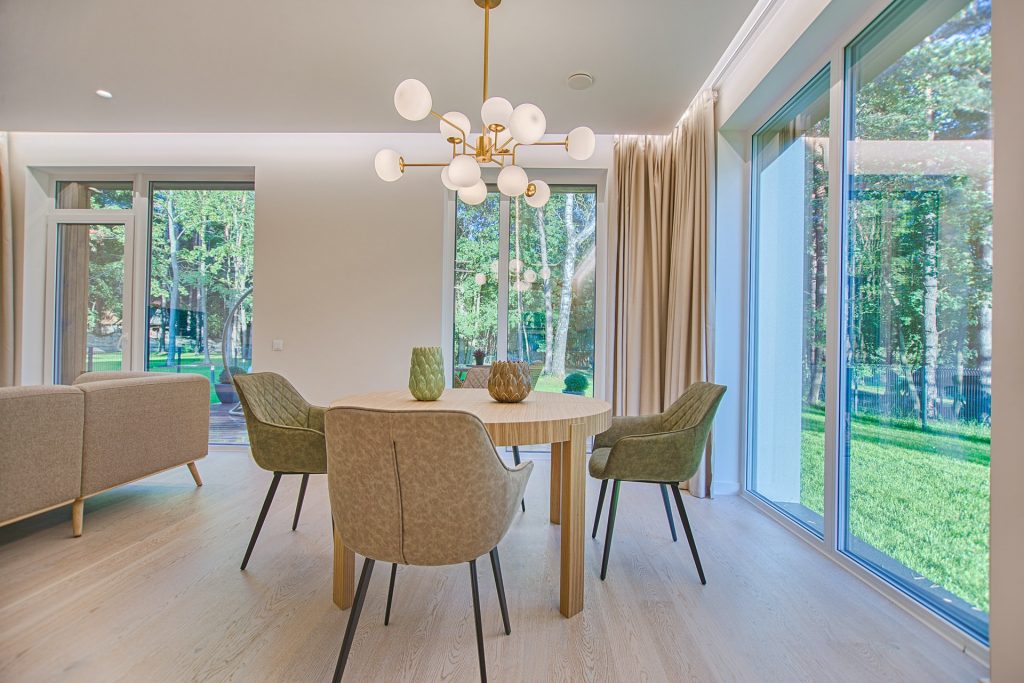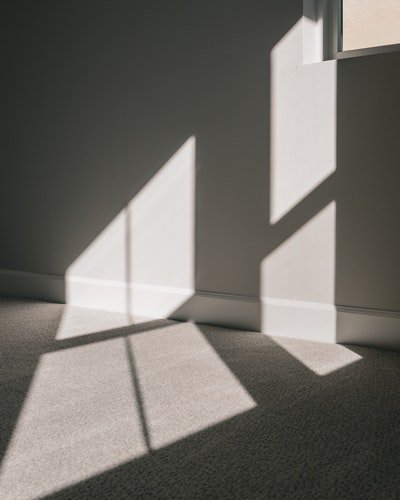Un investissement locatif neuf est, au départ, plus coûteux qu’un investissement dans l’ancien, mais il séduit de nombreux candidats désireux d’investir dans un bien de qualité plus personnalisé. L’opération doit être au demeurant bien préparée si l’on veut profiter de ses avantages en termes de rentabilité et/ou pour valoriser son patrimoine immobilier. Ever Invest examine pour vous à la loupe ce type d’investissement locatif.
Comment investir dans l’immobilier neuf

donc faire construire en se tournant souvent vers un logement en VEFA (vente en état futur d’achèvement) par l’intermédiaire d’un promoteur et d’un programme immobilier. Puis, comme pour tout investissement locatif, il est important ensuite de prévoir le financement, des ratios de rentabilité, et le bon montage fiscal.
Le choix d’un bien locatif neuf
S’il se fait sur plan, cela offre l’avantage de disposer d’un choix entre différentes surfaces, selon son budget et selon ses préférences en matière de locataires visés. Autre facilité offerte avec un achat dans l’immobilier neuf : il est facile à personnaliser et peut facilement être optimisé avec un équipement sur-mesure et des petits détails tenant aux revêtements des murs, des sols ou des cloisons.
Si l’on attend d’un bien immobilier davantage de personnalisation, il ne doit jamais, en revanche, se faire sans une bonne étude de l’emplacement. On veille à le choisir dans un quartier présentant du potentiel, soit un quartier commerçant, proche des écoles et des équipements tels que les transports et les infra structures sportives et culturelles. Il est même recommandé de voir plus loin, soit de prévoir les futures évolutions du secteur en consultant le PLU local. Si le tissu urbain est amené à changer, avec la construction de divers équipements, l’immobilier est appelé à prendre de la valeur, ce qui est un bon point pour sécuriser l’investissement. Investir dans le neuf permet dans ce cas d’espérer une plus- value à la revente et d’éviter le risque de la vacance locative.
À savoir
Un programme immobilier dans un secteur dynamique va s’accompagner souvent d’une valorisation du quartier, ce qui permet alors d’espérer une embellie du marché locatif, avec la possibilité à la clé d’augmenter le loyer. Investir dans le neuf permet alors d’entrevoir une belle valorisation de son bien. Seul inconvénient : veiller à respecter le plafonnement des loyers si l’on a eu recours au dispositif Pinel.
Le financement
Pour investir dans un logement neuf, le recours au crédit immobilier s’impose. L’effet de levier du crédit, joue, en effet, dans le neuf comme dans l’ancien. A ceci près que dans le neuf, les prêts comme les biens sont plus rares actuellement. Pour les accorder, les banques sont devenues encore plus regardantes sur les ressources des ménages. Les nouvelles mesures annoncées par l’État à la mi-décembre 2020, prévoient qu’elle ne se basent plus bientôt sur un coefficient d’endettement du ménage maximal de 33 %, mais de 35. Pour plus de sécurité en encore, elles incluront les frais d’assurance du crédit dans les charges du ménage chaque mois. Néanmoins, pour favoriser l’accès au crédit des ménages les plus modestes, l’État prévoit aussi de remonter la durée maximale de remboursement des prêts de 25 à 27 ans, ce qui va beaucoup intéresser les acquéreurs de logements neufs, notamment en VEFA.
Focus sur le PTZ
Ne vous y trompez pas ! Le PTZ, ce prêt à taux zéro, est une mesure prolongée par les pouvoirs publics en 2021, mais il ne concerne pas les investisseurs immobiliers, mais seulement les particuliers primo-accédants désireux de financer leur résidence principale.
La rentabilité de l’immobilier neuf

La fiscalité du neuf
Plusieurs possibilités sont offertes au niveau fiscal pour investir dans l’immobilier neuf. Toutes ne sont pas équivalentes et doivent donc être soigneusement étudiées selon la spécificité de chaque projet. Nous examinerons ici les plus intéressantes et les plus utilisées, soit le statut LMNP et les dispositifs de défiscalisation.
Le LMNP
Ce statut permet de bénéficier de certains avantages fiscaux à l’aide d’un investissement locatif dans le neuf. Il présente la particularité de soumettre les recettes locatives au régime des bénéfices industriels et commerciaux. Le LMNP permet également de déduire les charges locatives de ses recettes, selon un forfait de 50 % si l’on recourt au régime du micro Bic, ou en intégralité, majorée de l’amortissement si l’on opte pour le régime du réel. Un régime plutôt favorable, donc, pour investir dans le neuf, même s’il contraint obligatoirement à se tourner vers la location meublée.
Le dispositif Censi Bouvard
Une réduction d’impôt dite “Censi Bouvard” s’applique aussi aux loueurs en meublé non professionnel qui choisissent d’investir dans l’immobilier locatif en résidences service, avec des logements situés en EPHAD ou en résidence universitaire. La réduction d’impôts est de 11 % par an calculée sur le prix de l’achat immobilier, dans une limite de 300 000 euros. Le logement doit être néanmoins loué pour une durée minimum de 9 ans, et en meublé.
Le dispositif Pinel
C’est le dispositif le plus vanté pour stimuler l’investissement locatif dans le neuf. De fait, la loi Pinel, que la loi finance de cette année a prorogé jusqu’au 31 décembre 2022, est particulièrement appréciée de ceux qui se tournent vers l’immobilier neuf à des fins de défiscalisation. Elle offre de beaux avantages fiscaux qui se traduisent sous la forme d’une réduction d’impôt annuelle proportionnelle au prix du logement. Elle autorise à bénéficier de réductions allant de 12 à 18 %, selon la durée de mise en location du bien, soit 6 ou 9 ans, prorogeable jusqu’à 12 ans. Le montant global de la réduction d’impôt maximum prévue est de 300 000 euros.
Très populaire, le dispositif Pinel comporte quelques contraintes à mettre en balance avec la réduction d’impôts attendue.
- S’il permet la location nue, à l’inverse du LMNP, la loi le circonscrit uniquement à des zones où la tension locative est forte. Ces zones sont pour 2021, les zones A, A bis et B1.
- La loi Pinel prévoit aussi un encadrement des loyers, avec des plafonnements du prix
au mètre carré variant selon la zone concernée. Les ressources des locataires sont elles aussi plafonnées, de même que le nombre d’investissements autorisés, limité à 2 par an. - Les performances énergétiques d’un logement en Pinel doivent répondre à certains critères fixés par l’article 46 AZA octies-0 Ade l’annexe 3 du code général des impôts.
- Un investissement de type Pinel doit être loué à titre de résidence principale. Contrairement au LNMP, il exclut certains types de location à rentabilité très haute, telles que la location saisonnière.
Astuce à connaître
Investir dans le neuf en Pinel est souvent choisi pour défiscaliser ses revenus pendant quelques années en envisageant de revendre le bien par la suite. Néanmoins, certains investisseurs optent pour une solution médiane et font basculer leur bien en location meublée sous le statut LMNP au terme de la durée de défiscalisation.
Investir dans le neuf : le pour et le contre

Avantages à investir dans un logement neuf
Les pouvoirs publics ne se contentent pas d’encourager l’investissement locatif dans le neuf avec des réductions d’impôts. D’autres réductions viennent se superposer à ces avantages :
- frais de notaire réduits, avec notamment des droits de mutation compris entre 2 et 3 %, contre 7 à 8 % dans l’ancien.
- exonération de la taxe foncière durant les 2 années suivant l’achat du bien. Cette période permet donc d’encaisser des loyers et de commencer à rembourser son prêt, sans payer de taxe foncière.
- Autre avantage d’un bien immobilier neuf : la qualité de sa performance énergétique, grâce à la mise en application depuis janvier 2021, de la norme RE 2020. Cette norme prévoit de favoriser les matériaux bio sourcés, de manière à réduire les émissions de gaz à effet de serre des bâtiments. Plus sains, les bâtiments deviennent aussi moins énergivores, avec une priorité donnée aux sources de chaleur « propres ». Le résultat ? Des logements plus écologiques en phase avec les préoccupations des jeunes générations. Une opportunité lors de la mise en location ce ces logements, pour attirer des locataires de qualité, qui apprécieront ce « plus » du logement et seront par conséquent, moins enclins à bouger.
- Parmi les autres avantages propres à ce type d’investissement locatif, rappelons aussi que les logements neufs ne nécessitent pas ou peu de travaux de rénovation. En plus, ils bénéficient des garanties après-vente du constructeur : garantie biennale, garantie décennale, garantie du constructeur, etc. Un vrai gage de tranquillité pour les nouveaux propriétaires, qui pourront passer directement à la mise en location, une fois la livraison des travaux effectuée. Ils oublient ainsi les soucis causés par des vices cachés : murs fissurés, fuites d’eau, etc (ces impondérables venant trop souvent, malheureusement, saboter les calculs de rentabilité échafaudés lors l’acquisition du bien).
Les inconvénients d’un investissement dans le neuf
Avant de réaliser un investissement dans le neuf, il faut être souvent patient, car un logement acquis en VEFA met en moyenne 2 ans avant d’être construit et livré.
- Attention à la rentabilité d’un investissement locatif dans le neuf. Les prix à l’achat du mètre carré sont plus élevés (ils tournent actuellement autour de 4 200 euros le mètre carré en région, contre 5 500 sur la région parisienne).
- Il faut prendre garde aussi aux mirages de la défiscalisation, notamment en ce qui concerne un investissement immobilier en loi Pinel. De nombreux pièges existent.
Le plus courant consiste à évincer la question de la rentabilité en se laissant éblouir par l’avantage des réductions d’impôts. Le risque est d’investir dans une dette, qui traînera des cashflows négatifs tous les mois, et ne sera même pas remboursée une fois la période des cadeaux fiscaux terminée. On sait effectivement qu’aujourd’hui, seulement 50 % des investissements selon la loi Pinel s’avèrent rentables en sortie, ce qui est logique si l’on songe au plafonnement des loyers (ces logements neufs se louent en moyenne 20 % moins cher). - Ajoutez à cela que certains programmes immobiliers peuvent être malhonnêtes, proposer des prix de vente très au-dessus des prix du marché, en se présentant “tous frais compris”, avec des tarifs fort mal négociés au niveau des assurances de prêt (assurance emprunteur et assurance invalidité-décès).
- Le choix du programme immobilier est aussi une question sensible, car un projet immobilier qui n’aboutit pas peut devenir un véritable cauchemar pour l’investisseur. Pour éviter ce risque, il convient au départ d’apporter un soin particulier au choix du promoteur. Quelques précautions de base s’imposent en vérifiant sa réputation professionnelle, sa solidité financière ainsi qu’en se renseignant sur ses précédentes réalisations. Une bonne pratique consiste d’ailleurs à se déplacer pour se rendre compte sur place de la qualité de ses prestations.
Pour conclure, il faut savoir que l’on peut attendre dans l’immobilier neuf, des investissements moins rentables, mais plus prudents, notamment pour se constituer un patrimoine immobilier dans une optique de transmission. On attend aussi de cet investissement qu’il soit pérenne, avec des bâtiments qui vont bénéficier d’une performance énergétique optimale et d’une bonne qualité du bâti.
Malgré une relative pénurie de biens qui risque de se prolonger jusqu’en 2022, il est donc encore judicieux de penser à investir dans le neuf. Mais le plus grand soin doit être pris dans le choix du promoteur et de la construction, et les avantages d’une défiscalisation alléchante ne doivent pas faire oublier, également, les impératifs de rentabilité et la perspective d’une revente.


 Avant de réaliser un investissement dans le neuf, il faut être souvent patient, car un logement acquis en VEFA met en moyenne 2 ans avant d’être construit et livré.
Avant de réaliser un investissement dans le neuf, il faut être souvent patient, car un logement acquis en VEFA met en moyenne 2 ans avant d’être construit et livré.